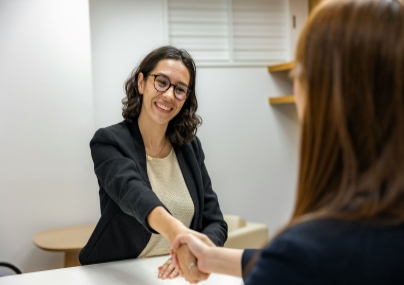New guidelines on electronic discovery could be issued in Hong Kong in the first quarter of 2014, with a draft expected to be released soon, a lawyer familiar with the matter has said.
Speaking at a roundtable on eDiscovery on Sep. 13, Menachem Hasofer, a partner at Mayer Brown JSM, said that discussions among the Hong Kong judiciary are at an advanced stage. “The Hong Kong judiciary is actively engaged in creating a pilot scheme for discovery and the inspection of electronically stored documents in the commercial list at the High Court in Hong Kong. The pilot scheme is expected to be implemented by way of a practice direction which is anticipated for issue in the first quarter of 2014,” said Hasofer. Though the preparation of the practice direction is still a work in progress, the judiciary is expected to release a draft for consultation in the final quarter of 2013, added Hasofer.
Once the draft is released, the judiciary will listen to views both from the wider legal profession and other concerned stakeholders on the proposals. The starting point for discussion will be to examine Practice Direction 31B in the UK – which focuses on the disclosure of electronic documents and the exchange of information between lawyers and the courts – and evaluate its success, while determining how much of its wording can fit into Hong Kong’s High Court rules.
“There are a number of questions that are expected to be left open in the consultation draft regarding how it will work in practice and what tools are available. Before the judiciary issues the final practice direction, they will no doubt be seeking reliable information on what the costs will be,” said Hasofer.
Electronic discovery (eDiscovery) refers to discovery in civil litigation which deals with the exchange of information in electronic format. The discovery process, which is often seen as a battleground for litigation, is rapidly evolving through the rise of eDiscovery. “Clients see the discovery process as a necessary evil, and generally want to complete it as quickly as possible,” said Jonathan Crompton, a lawyer at Dechert.
The judiciary is also determined to create a level playing field for litigants in person and smaller firms, said Dominic Wai, a partner at Baker & McKenzie. “The practice direction may initially apply to the commercial list, which usually includes big corporations and big cases. But I think the ultimate objective is to try to also adapt that to the general list, where you could have cases for litigant in persons,” said Wai.
However, the typical case in which eDiscovery is relevant does not necessarily involve a litigant in person against a corporation, said Crompton. In other cases, such as one involving a smaller corporation versus a big company, the playing field is meant to be level and litigants do not necessarily need extra protection. “Instead, clients need knowledge and have to be willing to engage in the eDiscovery process,” said Crompton. He suggested that in addition to being familiar with their retention protocols, storage and retrieval systems, if clients are more aware of the data set that they hold – for example by retaining statistics on the approximate number of electronic documents sent and received daily by employees in different groups of their company – they can come up with the information more readily. This in turn would assist a litigant to manage the eDiscovery process efficiently and to argue for a specific eDiscovery procedure in an individual case.
The importance of education
The proposal to issue new guidelines on eDiscovery is a positive step, but will need to be complemented by adequate education on all fronts. Lawyers at the roundtable agreed that education at the judicial level is likely to mirror the process in the UK, where only a small number of judges will become experts in eDiscovery. “Let’s assume there are a few judges, masters and registrars who start understanding eDiscovery. They will need to handle all of the complex eDiscovery case management and contested applications. It is sensible for the practice direction, when issued, to be introduced initially on a limited basis to match the number of cases to the number of available judges, masters and registrars” said Hasofer. Once Hong Kong’s judges, lawyers and litigants gain experience, the application of the practice direction is likely to broaden, said Aaron Bleasdale, a solicitor at Baker & McKenzie.
“The learning curve will be quicker in Hong Kong because we are able to look at England’s Practice Direction 31B, and the Singaporean experience,” said Hasofer. In addition, members of the judiciary involved in preparation of the draft practice direction understand that keyword searching on its own is a thing of the past, and the consultation draft is also intended to spur discussion on concept searching and predictive coding, said Hasofer. “The fact that they started talking about concept searching and predictive coding straight away shows that Hong Kong is miles ahead on the learning curve.”
The roundtable was co-hosted by ALB and Epiq Systems, an eDiscovery service provider, and was held at the Conrad Hotel in Hong Kong on Sep. 13. It was moderated by Chris Dale, who runs the eDisclosure Information Project, and featured lawyers from Mayer Brown JSM, Baker & McKenzie, Dechert, Simmons & Simmons, and Howse Williams Bowers.
Follow us on Twitter: @ALB_Magazine.


